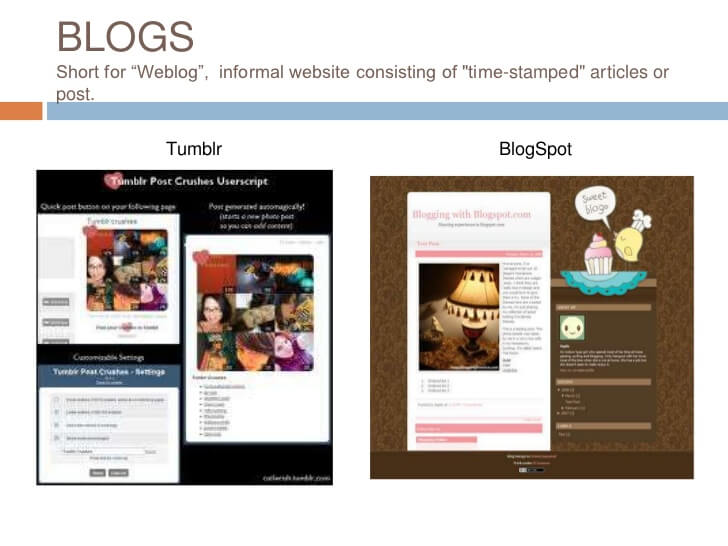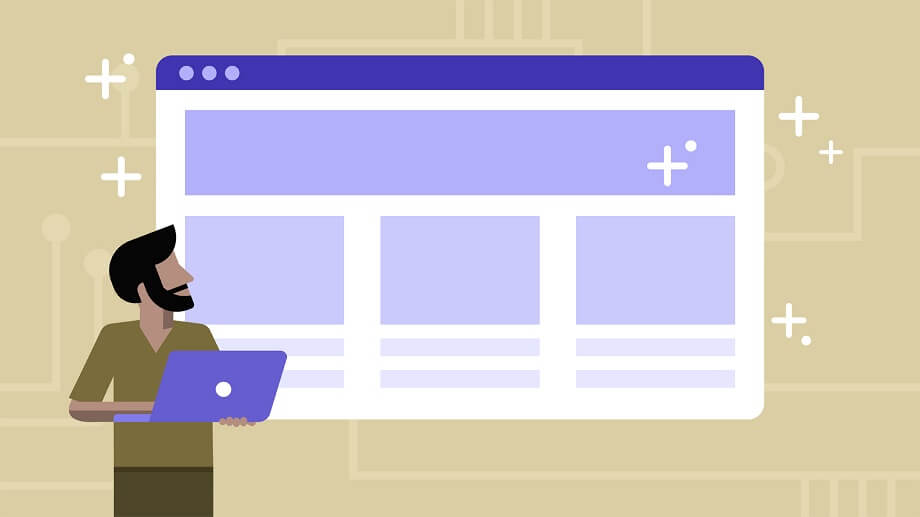Blogging has become an increasingly popular activity in recent years, as more and more people are finding creative and professional outlets through sharing their ideas and experiences online. However, with so many platforms available, it can be overwhelming to choose which one to use for your own blog.
In this article, we will examine some of the most popular blogging platforms and compare their features, pricing, and ease of use, so you can make an informed decision about which platform to use for your blog.
WordPress.org
WordPress.org is one of the most popular blogging platforms on the internet. It’s an open-source software, which means you can download and install it on your own web hosting service, giving you complete control over your blog. This platform offers a lot of flexibility and customizability, which makes it a popular choice for many bloggers. Some of the features that make WordPress.org so popular include:
A large library of plugins and themes that can be used to enhance the functionality and design of your blog.
Complete control over your content and the ability to add custom code and scripts.
An active community of users who provide support and help with troubleshooting.
However, WordPress.org can be difficult for beginners to use, as it requires some technical knowledge to set up and manage. Additionally, you will need to pay for web hosting and domain registration to use this platform.
WordPress.com
WordPress.com is a hosted version of WordPress that offers a more user-friendly interface than WordPress.org. It is a good option for bloggers who don’t want to deal with the technical aspects of web hosting and domain registration. Some of the features of WordPress.com include:
A simple setup process that requires no technical knowledge.
A large library of themes and plugins to choose from.
Automatic updates and security features that keep your site safe.
However, WordPress.com has some limitations, including the inability to install custom themes or plugins, which can be a deal-breaker for more advanced bloggers. Additionally, some features, such as custom domains and storage, require payment.
Wix
Wix is a popular website builder that offers a blogging platform. It’s a good option for beginners who want an easy-to-use platform with no technical knowledge required. Some of the features of Wix include:
A drag-and-drop editor that makes it easy to create a custom design.
A large library of templates to choose from.
Built-in SEO tools that can help your blog get found in search engines.
However, Wix has some limitations when it comes to blogging, including the inability to import or export content and the lack of customization options for certain features. Additionally, some features, such as a custom domain and more storage, require payment.
Medium
Medium is a popular platform that focuses on the content and community rather than the design of the blog. It’s a good option for writers who want to focus on writing and sharing their content without worrying about design or technical aspects. Some of the features of Medium include:
A simple and clean design that focuses on the content.
A built-in audience of readers who are interested in reading and sharing content.
Easy to use and navigate interface.
However, Medium has some limitations, including the inability to customize the design of your blog or add custom code. Additionally, you don’t own your content on Medium, and the platform can change its policies or disappear altogether, which can be a risk for bloggers who want more control over their content.
Ghost
Ghost is a newer platform that offers a simple and elegant blogging experience. It’s a good option for bloggers who want a minimalist design and a focus on writing. Some of the features of Ghost include:
A clean and minimal design that focuses on the content.
Built-in SEO tools and analytics to help you optimize your
Ghost is a new, open-source blogging platform that focuses on simplicity and speed. It offers a range of customization options and themes, making it easy to create a unique and visually appealing blog. Ghost is SEO-friendly and has a simple, clean interface that is easy to use.
How much does it cost to start a blog?
The cost of starting a blog can vary depending on the platform you choose, the features you want to include, and how much you’re willing to invest in your blog. Here are some of the costs you can expect when starting a blog:
Platform fees: Some platforms, such as WordPress.com or Wix, offer free plans with limited features, but to access more features, you may need to upgrade to a paid plan. These plans typically range from $5 to $50 per month.
Domain name: A domain name is the web address of your blog, such as www.yourblogname.com. A domain name typically costs between $10 to $20 per year.
Web hosting: If you choose to use a self-hosted platform like WordPress.org, you’ll need to pay for web hosting. Web hosting fees can range from $2 to $50 per month, depending on the features and storage you need.
Design and customization: If you want a custom design for your blog, you may need to pay a designer or purchase a premium theme, which can cost anywhere from $20 to $200.
Plugins and other features: Some platforms may require you to pay for additional plugins or features to enhance the functionality of your blog. Prices for these can vary widely, depending on the specific features you need.
Marketing and promotion: If you want to promote your blog and reach a wider audience, you may need to invest in marketing and advertising. This can include paid social media ads or SEO services, which can cost anywhere from $50 to several thousand dollars per month.
Overall, the cost of starting a blog can range from a few dollars per month to several hundred dollars per year, depending on the platform and features you choose. It’s important to consider your budget and priorities when choosing a platform and investing in your blog, but it’s also important to remember that the value of your blog can far outweigh the initial cost.
How often should I post on my blog?
The frequency of blog posts can vary depending on your goals, your niche, and your schedule. However, there are some general guidelines to consider when deciding how often to post on your blog:
Consistency: It’s important to establish a consistent posting schedule so your readers know when to expect new content. This could be once a week, twice a week, or even daily, depending on your availability and resources.
Quality over quantity: While it’s important to have a regular posting schedule, it’s also important to prioritize the quality of your content over the quantity. It’s better to post one high-quality post per week than several low-quality posts.
Niche: Depending on your niche, your audience may expect more or less frequent posts. For example, news and current events blogs may require daily updates, while personal blogs may only require weekly or monthly posts.
Engagement: Pay attention to how often your audience engages with your content. If you find that your readers are commenting and sharing your posts frequently, it may be a sign that you need to post more often.
Ultimately, the frequency of your blog posts will depend on your goals and your resources. It’s important to find a schedule that works for you and your audience, while still maintaining the quality of your content. Remember, it’s better to post consistently and maintain quality than to post frequently with subpar content.
How do I come up with ideas for blog posts?
Coming up with ideas for blog posts can be a challenge, especially if you’re just starting out. However, there are many techniques you can use to generate ideas for your blog posts. Here are a few:
Brainstorming: Take some time to brainstorm topics related to your niche or industry. Write down everything that comes to mind, even if it seems silly or irrelevant at first. You can then refine these ideas and turn them into potential blog posts.
Keyword research: Use keyword research tools like Google Keyword Planner or SEMrush to find popular keywords related to your niche. These keywords can help you come up with topic ideas for your blog posts.
Answer common questions: Think about the common questions your audience may have related to your niche. You can create blog posts that answer these questions and provide valuable information to your readers.
Share your experiences: Share your own experiences related to your niche. For example, if you’re a travel blogger, you can write about your own travel experiences and share tips and advice based on those experiences.
Follow trends: Stay up to date with the latest trends and news in your industry. You can create blog posts that explore these trends and provide your own insights and opinions.
Use social media: Social media platforms like Twitter, Instagram, and Facebook can be great sources of inspiration for blog post ideas. Follow influencers and thought leaders in your industry, and pay attention to the content they share.
Look at your analytics: Review your blog’s analytics to see which posts are getting the most engagement and traffic. You can create follow-up posts on popular topics or explore related topics to build on that success.
Overall, there are many ways to come up with ideas for blog posts. The key is to stay curious, creative, and open to new ideas. With time and practice, you’ll develop your own unique voice and approach to blogging.
How long should my blog posts be?
The length of your blog posts can vary depending on your goals, your audience, and your niche. However, there are some general guidelines to consider when deciding how long your blog posts should be:
Quality over quantity: The most important factor to consider is the quality of your content. It’s better to focus on creating high-quality, engaging content than to worry too much about the length of your posts.
Consider your audience: Think about your audience and their preferences. Are they looking for in-depth, long-form content, or do they prefer shorter, more concise posts?
Focus on the topic: The length of your blog post should be determined by the topic you’re covering. Some topics may require a longer post to cover all the necessary information, while others may be better suited to a shorter post.
SEO considerations: Search engines tend to favor longer content, so if you’re looking to improve your SEO, you may want to aim for longer blog posts. However, it’s important to keep in mind that quality and relevance are still the most important factors in ranking well in search engines.
Overall, there’s no hard and fast rule for how long your blog posts should be. Some bloggers prefer to write shorter, more frequent posts, while others focus on longer, in-depth content. The key is to find the right balance between quality, relevance, and the preferences of your audience. As a general guideline, blog posts that are around 1,000-2,000 words tend to perform well, but ultimately the length of your posts should be determined by the needs and interests of your audience.












